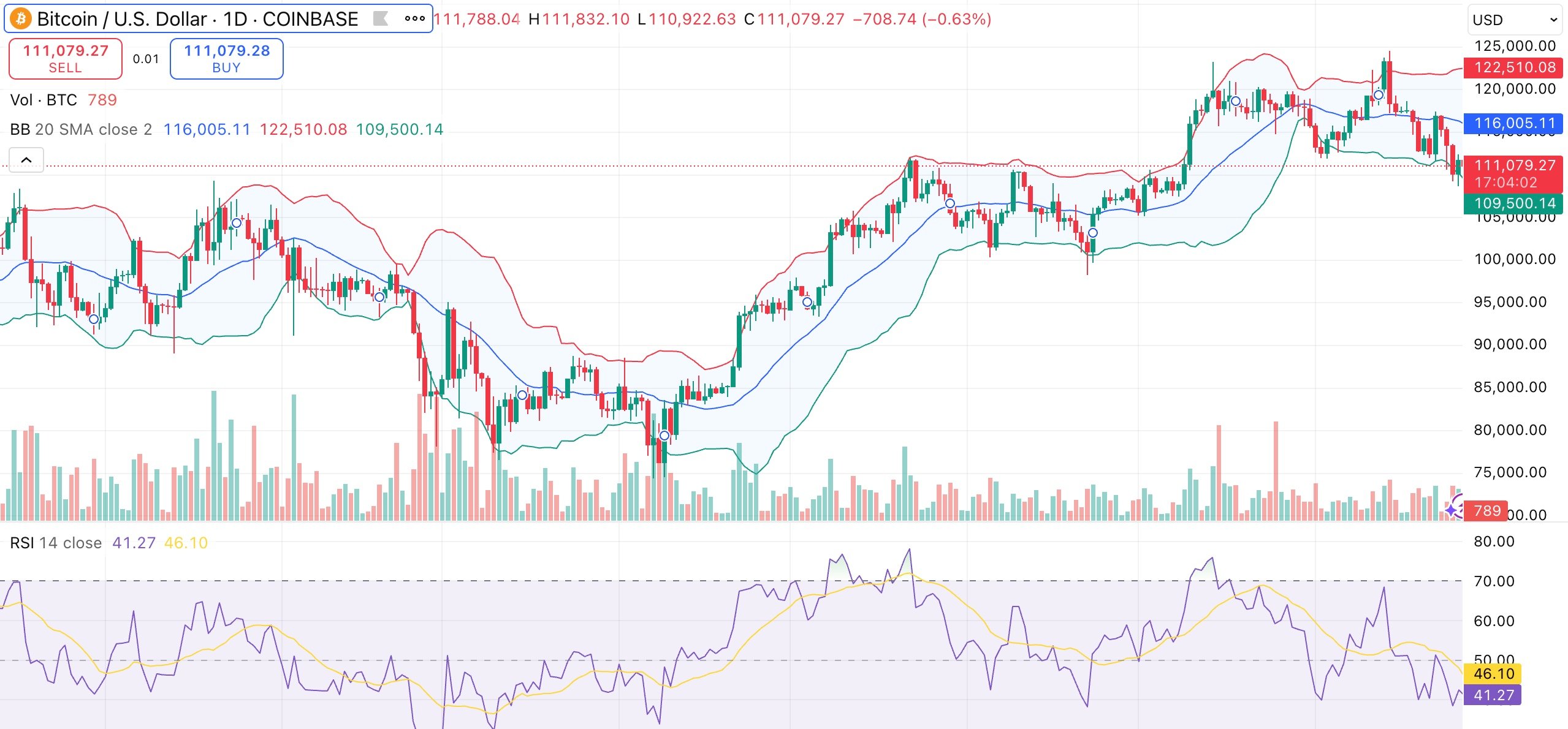Bitcoin slipped to $111,038 at press time, up 0.9% in the last 24 hours but still down 2.4% over the past week as short-term speculators appear ti be selling.
Summary
- Bitcoin price trades around $111K, 10% off its Aug. 14 all-time high.
- New investors capitulate, while 1–6 month holders stay profitable.
- RSI nears oversold, hinting at short-term relief.
Bitcoin (BTC) is now trading about 10% below its all-time high of $124,128 set on Aug. 14. Trading activity has cooled, with 24-hour spot volume at $38.7 billion, a 33% drop from the previous day. Derivatives markets show a similar slowdown.
Future volume fell 40.7% to $81.5 billion, while open interest dipped 0.7% to $81.3 billion, according to Coinglass data. Tighter price swings may result from lower futures activity, which usually indicates less speculative demand.
Bitcoin on-chain data shows a healthy reset
The recent drop appears to be displacing newer players rather than long-term holders, according to on-chain data. On an Aug. 27 analysis, CryptoQuant contributor Crazzyblockk noted that investors holding BTC for less than a month are sitting on average unrealized losses of -3.5%, prompting many to sell.
This is confirmed by a marked reduction in supply held by these short-lived addresses. Meanwhile, holders in the 1–6 month range remain in profit (+4.5%), showing little sign of stress. This indicates the sell-off is concentrated among recent entrants rather than across the broader short-term holder base.
According to Crazzyblockk, this kind of capitulation is “constructive,” as it redistributes coins from weaker hands to more resilient holders, strengthening Bitcoin’s foundation for the move.
Market pressure builds as Bitcoin buy/sell ratio weakens
Another CryptoQuant analyst, CryptoOnchain, flagged that Bitcoin’s 30-day moving average of the Taker Buy/Sell Ratio has dropped to its lowest point since May 2018. The ratio indicates persistent selling pressure when it drops below 0.98, and the current reading shows that the market is experiencing significant stress.
The concerning aspect is that this ratio is currently below what was observed at the previous peak of Bitcoin in November 2021. Although the price has increased, this divergence indicates that the underlying buy-side momentum is waning, making the market susceptible to additional short-term declines.
Bitcoin technical analysis
Chart indicators give a mixed picture. At 41, the Relative Strength Index is close to oversold territory and may provide some short-term relief. Additionally, the Commodity Channel Index shows a buy signal, indicating that Bitcoin might be stabilizing.

However, momentum and trend indicators remain bearish. The MACD and momentum both signal downside pressure. Moving averages are similarly tilted bearish. BTC trades below the 10-, 20-, 30-, and 50-day SMAs/EMAs, reinforcing a short-term downtrend.
On the positive side, Bitcoin continues to hold above its long-term support between its 100- and 200-day EMAs, which are approximately at $111,000 and $103,000, respectively.
If buyers step in around the $110,000–$111,000 range, RSI relief could push BTC back toward resistance near $115,000–$117,000. A failure to hold the $110,000 level risks opening a path to the $107,000–$108,000 zone, with stronger support around $103,000 at the 200-day average.








